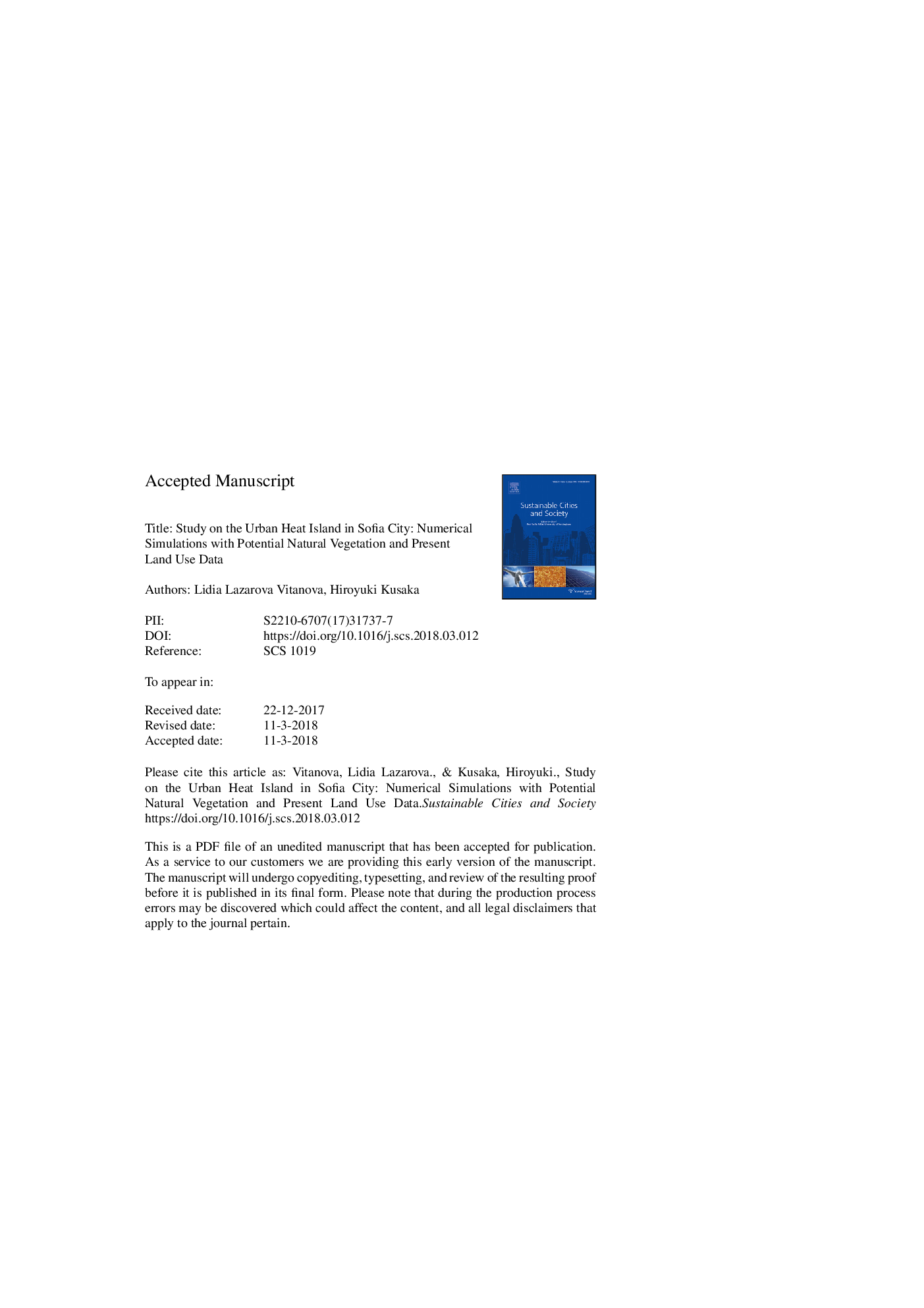| Article ID | Journal | Published Year | Pages | File Type |
|---|---|---|---|---|
| 6774981 | Sustainable Cities and Society | 2018 | 62 Pages |
Abstract
This study investigates the characteristics of urban heat island (UHI) and the impact of urbanisation on the temperature distribution in Sofia City, Bulgaria, using observational network data and Weather Research and Forecasting (WRF) model with a 1â¯km horizontal resolution. The observational data show that in the morning at 0600 LST, the surface air temperature in the central station of Sofia City is 1.6-2.4â¯Â°C higher than those of the suburb stations, while at 1500 LST, this temperature difference decreases to approximately 0.5â¯Â°C. To evaluate the impact of urbanisation on the temperature distribution, the WRF model was used to simulate three separate Julys (2011-2013) in three land use cases: (1) current land use with anthropogenic heat, (2) without anthropogenic heat and (3) urban land cover replaced by potential natural vegetation. The simulated results from the current case (1) were compared with the observations. The WRF model accurately reproduces the observed temperatures in Sofia City and its surrounding stations with mean biases from â0.64â¯Â°C to 1.33â¯Â°C. The simulated monthly mean temperatures were compared between the current case and natural vegetation. The results indicate a significant nocturnal temperature increase of 3.4â¯Â°C in the central part of Sofia City.
Keywords
Related Topics
Physical Sciences and Engineering
Energy
Renewable Energy, Sustainability and the Environment
Authors
Lidia Lazarova Vitanova, Hiroyuki Kusaka,
